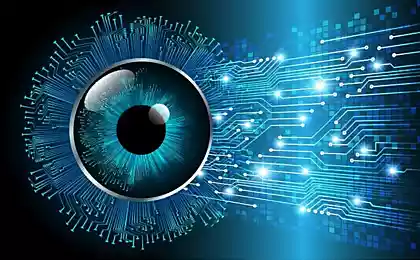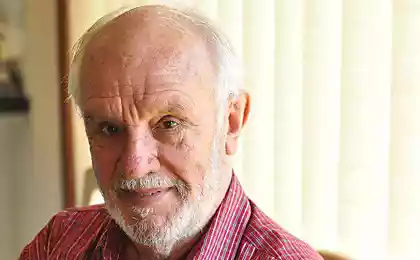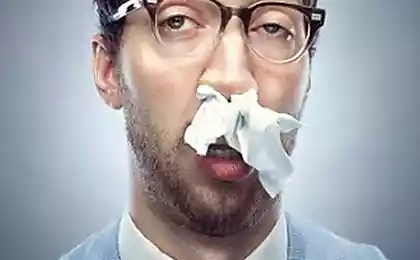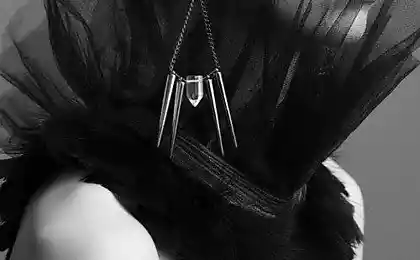788
History donation
In ancient times, blood was considered a source of vitality and has been used as a therapeutic, healing, anti-aging agents. It was believed that the blood has miraculous powers. Founder of medicine - Hippocrates in ancient Greece gave the drink to patients with mental disorder the blood of healthy people. In ancient Rome, epilepsy and the elderly dying gladiators drank blood, blood taken, and as a rejuvenating agent. As a therapeutic agent used and the blood of animals. The Egyptian army the troops constantly followed a flock of sheep whose blood was used to treat the sick and wounded soldiers.
In the Middle Ages began to actively develop science. Scientists of that time actively studied human anatomy and physiology. In the middle of the 17th century it was discovered the law of circulation (English physician U.Garvey). Attempts were made to a blood transfusion from animal to animal (anatomist and physiologist R.Louer successfully held a blood transfusion dogs). Professor Zh.Denis went on, he poured the blood of the lamb to the young boy. Such attempts have been made by other scientists. However, in most cases such transfusions were unsuccessful.
In 1918 the world's first English physiologist Blundell was transfused blood from person to person. At the beginning of XX century in Russia St. Petersburg obstetrician G.Volh dying from loss of blood transfused blood giving birth for the first time and thus saved her life.

Late 19th - early 20th century is characterized by the rapid development of the natural sciences. It becomes clear, many mechanisms of the human body. A new era in the development of a blood transfusion.
Of great importance for the successful use of blood transfusions for medical purposes was the discovery of blood groups.
In 1900, the Viennese K.Landshteyner bacteriologist, Nobel Prize winner, made the discovery that the blood of different people divided on the basis of group membership (AB0 blood group system), this fact was confirmed in 1901 by a number of researchers, and the value of this new medical technique It was convincingly demonstrated and used in medical practice to save the lives of seriously ill. It is no coincidence that this Birthday K.Landshteynera - June 14, was later selected by the World Blood Donor Day (International Federation of Red Cross and Red Crescent Societies, the International Federation of Blood Donor Organizations and the International Society of Blood Transfusion, the World Health Organization).
Landsteiner discovered blood groups of three; Lansky in 1907 and in 1910 Mass - identified the IV group. In 1907 Hekton exploring the agglutination during the transfusion, pointed to the incompatibility of the blood groups as the true cause of severe complications. That same year, the first time Griel use in the practice of the doctrine of izoagglyutinatsionnyh properties of blood. In 1909, he reported on 61 successful blood transfusions. Following the principle of selecting donors Grielem used and other US surgeons began izoagglyutinatsionnyh based on the properties of the blood (Ottenberg 1908 Bornheym 1912).

There remained the problem of rapid blood clotting, making it impossible to store it in a long period of time.
At the beginning of the XX century, a number of researchers (V.A.Yurevich, N.K.Rozengart (1910), Justin (1914), Levison (1915), Egaut (1915)) proposed the use of sodium citrate to prevent clotting. This proposal would not only use a stabilized blood at the site of its receipt from the donor, and transported over long distances. "Citrate method of" blood transfusion later received universal acceptance and quickly spread worldwide.
During the First World War, not all countries in the armies of transfusion method was applied on the same scale, it is not always clearly organized case a blood transfusion. Despite this, during the war very strongly advocated the therapeutic value of the new method to save the lives of severely wounded in a combat situation. Surgeons have appreciated it in the military field. After the war, the armies of all the work of creating the blood transfusion service.
The method of blood transfusion in Russia after the October Revolution, spread with extraordinary rapidity. It is widely used in Moscow, Petrograd, Kharkov, Saratov and other cities.
With the introduction of the method into practice there were new pressing issues - preservation of blood.

In 1926 in Moscow led by Professor Bogdanov opened the world's first Institute of Blood Transfusion, which played an important role in the development of national science and hematological wide practical implementation of the method of blood transfusion. In 1930, at the initiative of V.N.Shamova opens a second blood transfusion institute in Kharkov.
In 1931 in Moscow it was created Blood transfusion station on the basis of which the world's first developed a method of preserving serum and plasma, as well as the method of harvesting dry plasma. At the same time created a unified state system of organ donation on the principle of "maximum benefit to the patient, no harm to the donor».
During World War II, interest in learning, the development of methods and practical application of the method of transfusion has increased significantly worldwide. Blood transfusion has been widely used in hospitals - both at the front and the rear under.
During the Great Patriotic War, our army was operating in excess of 1, 7 million. Liters of stored blood, which was applied to 7 million. Transfusions. Army donors Patriots reached 5, 5 mln. People - it has played an important role in improving treatment outcomes and to expedite the return of the wounded in the operation.
In cities such as Moscow, Leningrad, the number of donors every day reached more than 2,000 people. In almost all cities and regional centers of the country were deployed donated items. Blood donation knew no borders and unites people completely different professions, social status and age.
The postwar years were referred to the heyday of donation, involving mostly organized groups of people. Taking blood from such donors is carried out directly in companies and institutions special mobile teams of institutions and blood transfusion centers (SEC). Medicine has evolved. Blood and its components are widely applied in practice.

One of the leading and important organizational tasks for the improvement and simplification of the accounting system was centralized donor donation and the establishment of major cities Uniform donor centers. At the time it was formulated and published "Regulations for the acquisition of donor staff," which detailed the principles and methods of propaganda organ donation among the population. In November 1955 it issued an order defining the rights and benefits the donor.
Thus, since 1957, the Soviet Union has evolved a new form of patriotism, humanity and the desire to help a sick friend - remunerated donation. It was laid down a new principle, which includes equal rights for all citizens to receive blood and blood components for therapeutic use in case of necessity (illness, emergencies, etc.) and simultaneously the moral duty of every member of society to take part in private donation.
Unfortunately, the modern period in the history of the donation can be legally called a period of recession. The total number of donors in Russia in general and Moscow in particular, over the past decade has decreased dramatically.

Development of the donation in the vast majority of European and other economically developed countries is different from the Russian. The European Union proclaims donation three principles: free of charge, voluntary and constancy (periodicity). Created donor community. This non-governmental organizations with a state subsidy. The ratio of the number of donors on the proportion of the population in European countries meet the necessary "rules" (40-50 donors per 1000 population, while in Russia this ratio is more than 3 times less than the required norm).
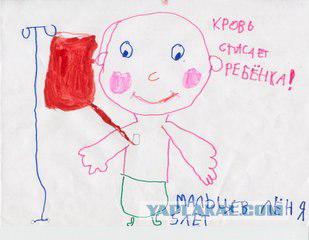
To save someone's life simply.
It is enough to come to the blood transfusion station. If you are over 18, you can become a donor!
There are 4 simple steps - and someone's life can be saved. Someone will live a full life again.
1. Find out the address and hours of the nearest blood service.
2. Ask your capabilities and contraindications, using the information on the site or by telephone hotline 8 800 333 3330 (free across Russia).
3. Follow the instructions to prepare for blood donation.
4. Come to the blood service and turn in the blood or its components.
The procedure of blood donation is absolutely safe and does not take much time.
Terms of delivery of blood in different regions may vary slightly. So please find out in advance the exact requirements of the local services of blood or blood transfusion department of the local hospital.
All the inconveniences associated with time-consuming or possible discomfort is nothing compared with the understanding: Your blood will save the life of a man.
The procedure for delivery of blood components (plasma exchange, trombotsitaferez, granulocytes) is somewhat different from the rental of whole blood and requires more time and preparation of the donor. To learn more about donation components, consult a doctor local blood service.
Dobavleno1 in [mergetime] 1257275118 [/ mergetime]
On this Site:
www.donor-krovi.ru
www.yadonor.ru
Himself donor's campaigning!

Source:
In the Middle Ages began to actively develop science. Scientists of that time actively studied human anatomy and physiology. In the middle of the 17th century it was discovered the law of circulation (English physician U.Garvey). Attempts were made to a blood transfusion from animal to animal (anatomist and physiologist R.Louer successfully held a blood transfusion dogs). Professor Zh.Denis went on, he poured the blood of the lamb to the young boy. Such attempts have been made by other scientists. However, in most cases such transfusions were unsuccessful.
In 1918 the world's first English physiologist Blundell was transfused blood from person to person. At the beginning of XX century in Russia St. Petersburg obstetrician G.Volh dying from loss of blood transfused blood giving birth for the first time and thus saved her life.

Late 19th - early 20th century is characterized by the rapid development of the natural sciences. It becomes clear, many mechanisms of the human body. A new era in the development of a blood transfusion.
Of great importance for the successful use of blood transfusions for medical purposes was the discovery of blood groups.
In 1900, the Viennese K.Landshteyner bacteriologist, Nobel Prize winner, made the discovery that the blood of different people divided on the basis of group membership (AB0 blood group system), this fact was confirmed in 1901 by a number of researchers, and the value of this new medical technique It was convincingly demonstrated and used in medical practice to save the lives of seriously ill. It is no coincidence that this Birthday K.Landshteynera - June 14, was later selected by the World Blood Donor Day (International Federation of Red Cross and Red Crescent Societies, the International Federation of Blood Donor Organizations and the International Society of Blood Transfusion, the World Health Organization).
Landsteiner discovered blood groups of three; Lansky in 1907 and in 1910 Mass - identified the IV group. In 1907 Hekton exploring the agglutination during the transfusion, pointed to the incompatibility of the blood groups as the true cause of severe complications. That same year, the first time Griel use in the practice of the doctrine of izoagglyutinatsionnyh properties of blood. In 1909, he reported on 61 successful blood transfusions. Following the principle of selecting donors Grielem used and other US surgeons began izoagglyutinatsionnyh based on the properties of the blood (Ottenberg 1908 Bornheym 1912).

There remained the problem of rapid blood clotting, making it impossible to store it in a long period of time.
At the beginning of the XX century, a number of researchers (V.A.Yurevich, N.K.Rozengart (1910), Justin (1914), Levison (1915), Egaut (1915)) proposed the use of sodium citrate to prevent clotting. This proposal would not only use a stabilized blood at the site of its receipt from the donor, and transported over long distances. "Citrate method of" blood transfusion later received universal acceptance and quickly spread worldwide.
During the First World War, not all countries in the armies of transfusion method was applied on the same scale, it is not always clearly organized case a blood transfusion. Despite this, during the war very strongly advocated the therapeutic value of the new method to save the lives of severely wounded in a combat situation. Surgeons have appreciated it in the military field. After the war, the armies of all the work of creating the blood transfusion service.
The method of blood transfusion in Russia after the October Revolution, spread with extraordinary rapidity. It is widely used in Moscow, Petrograd, Kharkov, Saratov and other cities.
With the introduction of the method into practice there were new pressing issues - preservation of blood.

In 1926 in Moscow led by Professor Bogdanov opened the world's first Institute of Blood Transfusion, which played an important role in the development of national science and hematological wide practical implementation of the method of blood transfusion. In 1930, at the initiative of V.N.Shamova opens a second blood transfusion institute in Kharkov.
In 1931 in Moscow it was created Blood transfusion station on the basis of which the world's first developed a method of preserving serum and plasma, as well as the method of harvesting dry plasma. At the same time created a unified state system of organ donation on the principle of "maximum benefit to the patient, no harm to the donor».
During World War II, interest in learning, the development of methods and practical application of the method of transfusion has increased significantly worldwide. Blood transfusion has been widely used in hospitals - both at the front and the rear under.
During the Great Patriotic War, our army was operating in excess of 1, 7 million. Liters of stored blood, which was applied to 7 million. Transfusions. Army donors Patriots reached 5, 5 mln. People - it has played an important role in improving treatment outcomes and to expedite the return of the wounded in the operation.
In cities such as Moscow, Leningrad, the number of donors every day reached more than 2,000 people. In almost all cities and regional centers of the country were deployed donated items. Blood donation knew no borders and unites people completely different professions, social status and age.
The postwar years were referred to the heyday of donation, involving mostly organized groups of people. Taking blood from such donors is carried out directly in companies and institutions special mobile teams of institutions and blood transfusion centers (SEC). Medicine has evolved. Blood and its components are widely applied in practice.

One of the leading and important organizational tasks for the improvement and simplification of the accounting system was centralized donor donation and the establishment of major cities Uniform donor centers. At the time it was formulated and published "Regulations for the acquisition of donor staff," which detailed the principles and methods of propaganda organ donation among the population. In November 1955 it issued an order defining the rights and benefits the donor.
Thus, since 1957, the Soviet Union has evolved a new form of patriotism, humanity and the desire to help a sick friend - remunerated donation. It was laid down a new principle, which includes equal rights for all citizens to receive blood and blood components for therapeutic use in case of necessity (illness, emergencies, etc.) and simultaneously the moral duty of every member of society to take part in private donation.
Unfortunately, the modern period in the history of the donation can be legally called a period of recession. The total number of donors in Russia in general and Moscow in particular, over the past decade has decreased dramatically.

Development of the donation in the vast majority of European and other economically developed countries is different from the Russian. The European Union proclaims donation three principles: free of charge, voluntary and constancy (periodicity). Created donor community. This non-governmental organizations with a state subsidy. The ratio of the number of donors on the proportion of the population in European countries meet the necessary "rules" (40-50 donors per 1000 population, while in Russia this ratio is more than 3 times less than the required norm).

To save someone's life simply.
It is enough to come to the blood transfusion station. If you are over 18, you can become a donor!
There are 4 simple steps - and someone's life can be saved. Someone will live a full life again.
1. Find out the address and hours of the nearest blood service.
2. Ask your capabilities and contraindications, using the information on the site or by telephone hotline 8 800 333 3330 (free across Russia).
3. Follow the instructions to prepare for blood donation.
4. Come to the blood service and turn in the blood or its components.
The procedure of blood donation is absolutely safe and does not take much time.
Terms of delivery of blood in different regions may vary slightly. So please find out in advance the exact requirements of the local services of blood or blood transfusion department of the local hospital.
All the inconveniences associated with time-consuming or possible discomfort is nothing compared with the understanding: Your blood will save the life of a man.
The procedure for delivery of blood components (plasma exchange, trombotsitaferez, granulocytes) is somewhat different from the rental of whole blood and requires more time and preparation of the donor. To learn more about donation components, consult a doctor local blood service.
Dobavleno1 in [mergetime] 1257275118 [/ mergetime]
On this Site:
www.donor-krovi.ru
www.yadonor.ru
Himself donor's campaigning!

Source:







